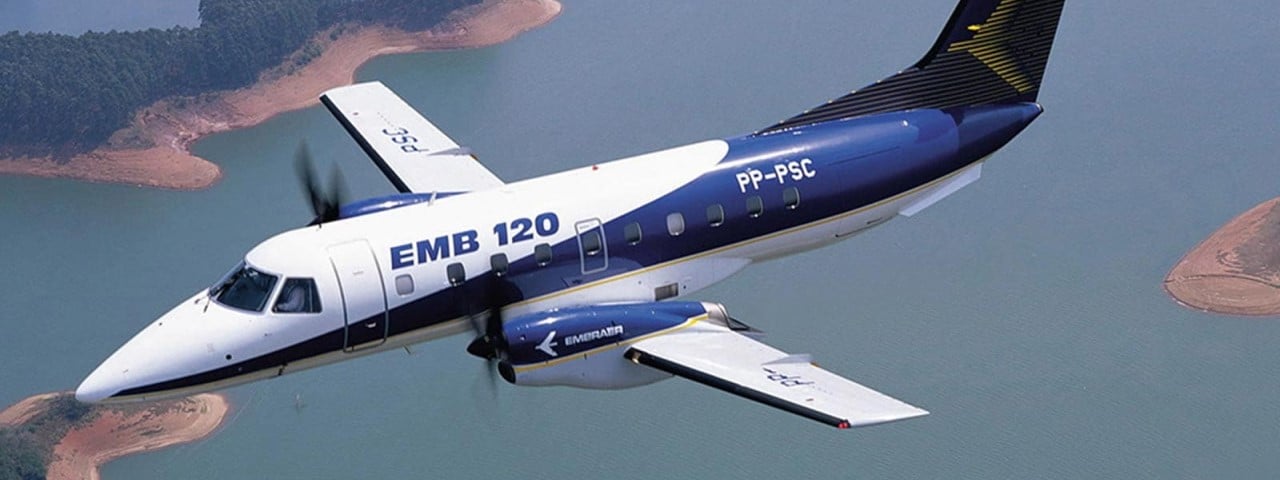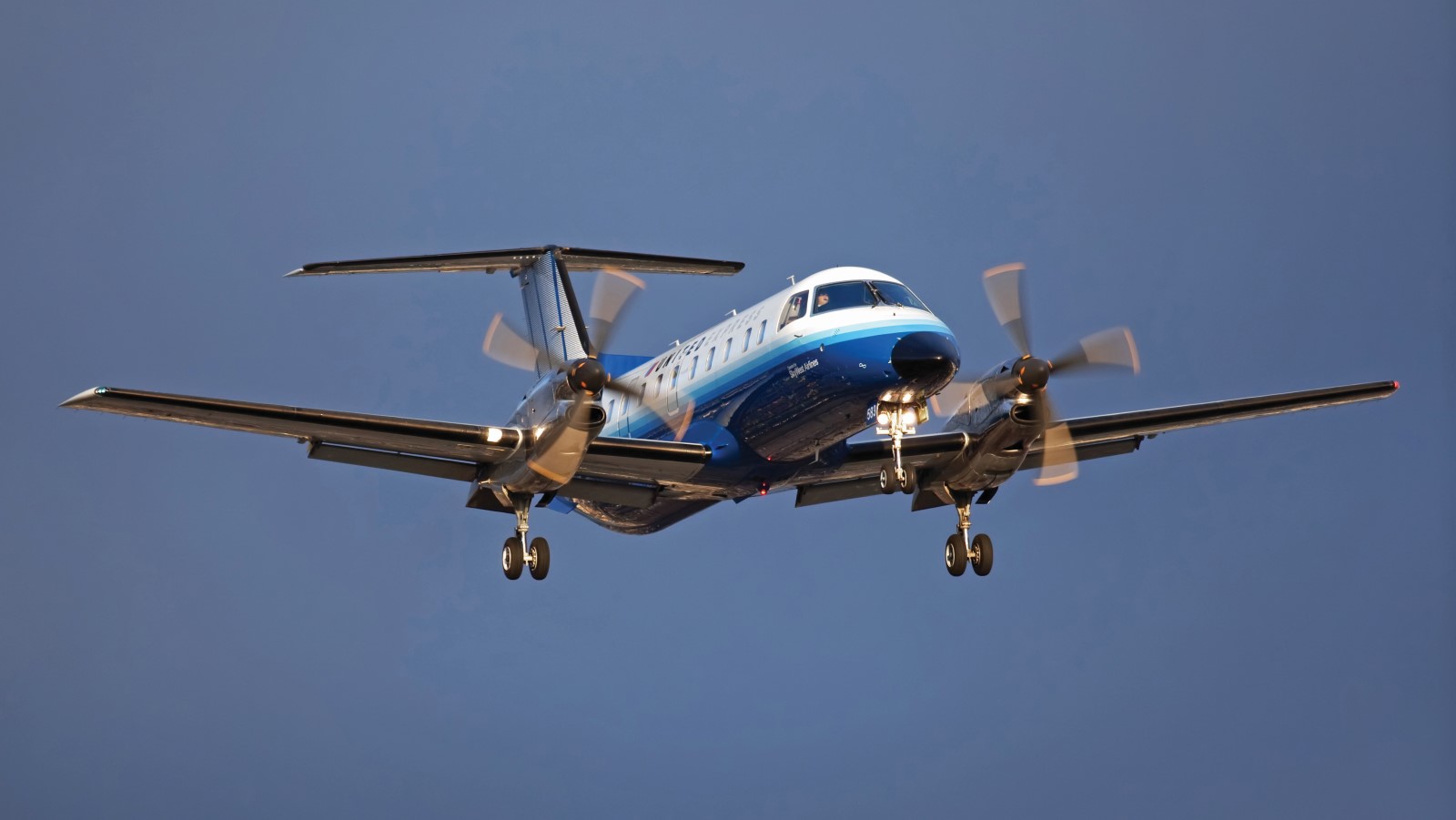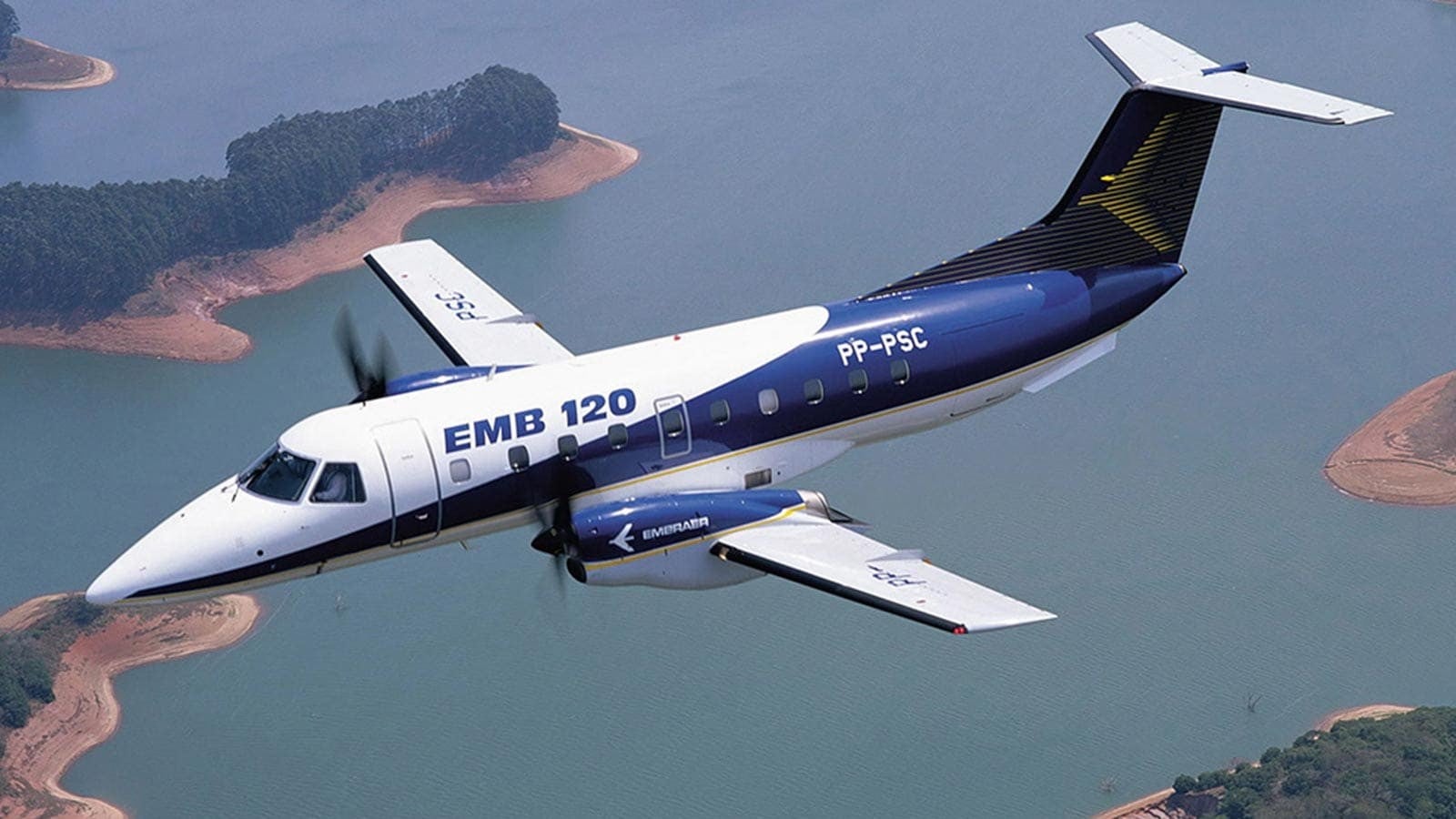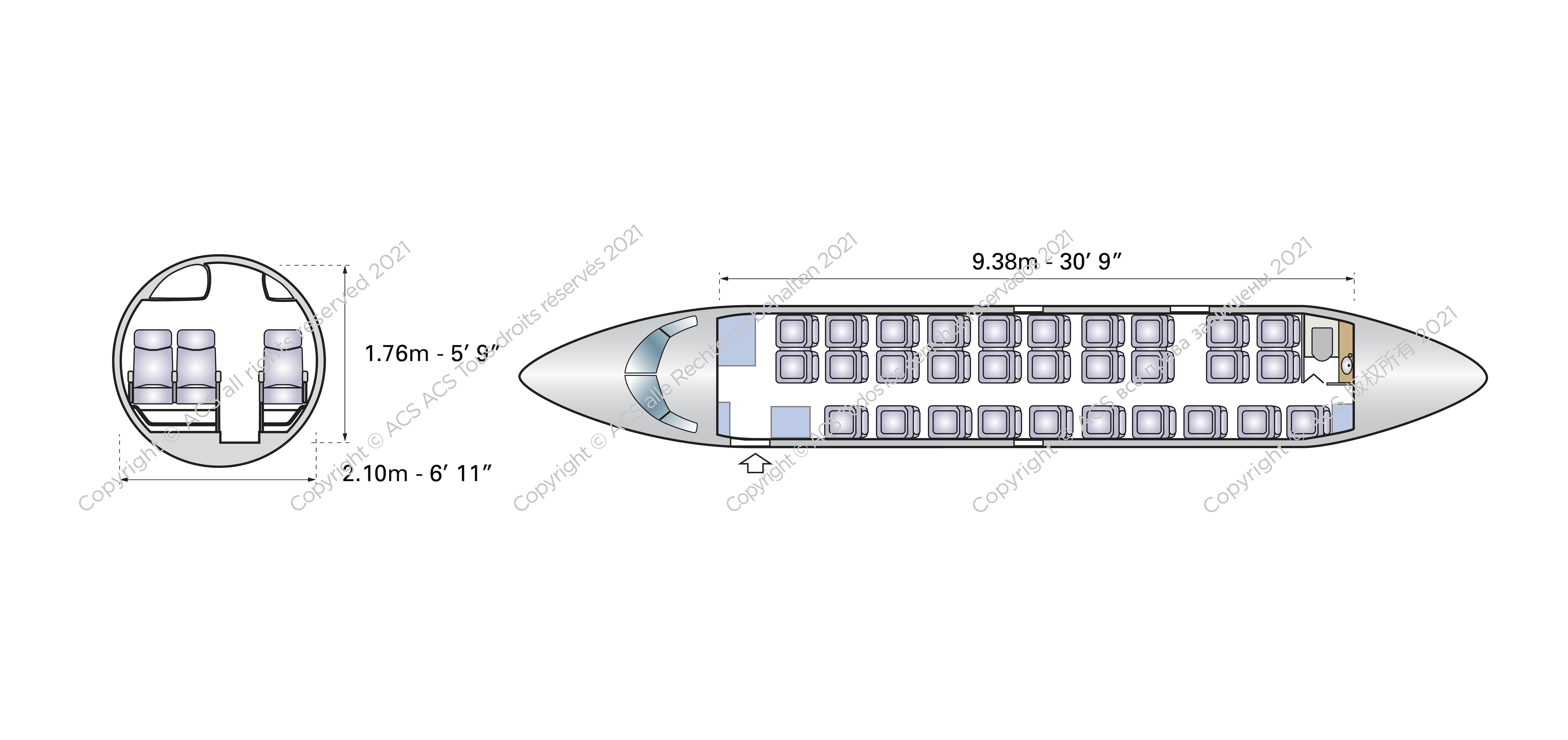EMBRAER 120
- Passengers 30
The Embraer 120 (also known as the Embraer EMB-120 Brasilia) was introduced in the mid-1980s and is still in service today. Due to its relatively low operating costs and economy over short-to-medium distances, it can be a cost-effective charter option.
About this aircraft
- The Embraer EMB-120 Brasilia first entered service in 1985.
- The Embraer 120 can seat up to 30 people and fly for around three hours.
- The EMB-120 can complete non-stop flights such as Miami to the Dominican Republic or Budapest to London.
- The baggage compartment is comparatively large, with enough space for one item of luggage per person.
- Various iterations of the aircraft include a 30-seat passenger version, an all-cargo version and a VIP transporter.
- Production of the EMB-120 and upgraded EMB-120ER ended in 2001.
Embraer produced several variants of the EMB-120 Brasilia following its success. The aircraft’s low operating costs made it highly sought-after with medium-to-large organisations and over 300 were sold before production ceased.
Interior design

With a cabin over nine metres long and around two metres wide and tall, there’s plenty of room to move around onboard the Embraer 120. Most versions feature a double-seat row for 18 passengers on the right-hand side and a single 11-seat row on the left, separated by an aisle. A fourth seat is normally installed in the last row.
Seats are designed for a 31-inch pitch, allowing better mobility and freedom of movement. Some EMB-120s have been retrofitted with larger seats and tables for VIP usage.
Below is a typical configuration found onboard an Embraer 120.

Interesting facts to learn before you fly
- Embraer has continued modifying the EMB-120 for greater passenger comfort. Improvements include a 31-inch seat pitch and 7 psi pressurisation in the cabin.
- While the aircraft can be found in some areas of Europe, it’s mostly used in the US and elsewhere in the Western Hemisphere.
- The EMB-120ER is an extended-range version of the EMB-120.
Technological features
Following a host of upgrades, the EMB-120 now boasts powerful twin 1,800 shp Pratt & Whitney PW118A turboprop engines. It offers a faster greater cruise speed compared with the original and its maximum take-off weight has increased to 26,433 lbs.
Embraer has also added a passive control system, noticeably reducing noise and vibration and better distributing them along the length of the cabin.
History
Embraer started developing its first transport category airliner in 1974 following the success of the EMB-110 Bandeirante. The Family 12X comprised three models: the EMB-120 Araguaia, EMB-123 Tapajós and EMB-121 Xingu.
The EMB-120 Araguaia was renamed the EMB-120 Brasilia when the project was officially launched in 1979. Additionally, feedback from prospective operators was incorporated into the design, leading to a completely new aircraft that was no longer related to the 12X family. Capacity was increased from 24 to 30 seats and new 1,500 shp Pratt & Whitney Canada PW115 turboprop engines were added.
The reimagined Brasilia attracted immediate interest from regional airlines, particularly in the United States, with its size, speed and ceiling allowing faster and more direct services around the US and Europe compared to similar aircraft. Years after entering service in 1985, the model was upgraded to the extended-range (1,575 km) EMB-120ER. This was adopted as the standard production model from 1993 until production ceased in 2001.
Manufacturer
Founded in 1969 with the help of the Brazilian government, Embraer has grown into the world’s third-largest commercial jet manufacturer, delivering over 8,000 aircraft in total and employing 18,000 people across sites in the Americas, Africa, Asia and Europe. Today an Embraer aircraft takes off every 10 seconds and its planes carry an average of 145 million passengers a year.
Embraer’s first aircraft was the Bandeirante, a turboprop plane designed for both civilian and military purposes. Aiming to remain at the forefront of avionics, the brand continuously reinvents its product designs with every new line of aircraft and allocates 10% of its total revenue towards research, development, innovation and improving industrial solutions.
Cost
The average price of a pre-owned Embraer 120 Brasilia is $932,000 (USD).
Charter rates
Charter rates for the Embraer 120 can vary greatly depending on the length of the journey you have planned, as well as the airports you decide to fly in and out of.
Contact our team to book a private charter flight on the Embraer 120. For information on other private jets to charter, browse our list of available aircraft.
Wet lease rates
ACMI (Aircraft, Crew, Maintenance, Insurance) wet lease rates for the Embraer 120 can vary depending on the age of the aircraft, length of the lease term, the number of block hours being guaranteed and the average cycle ratio.


